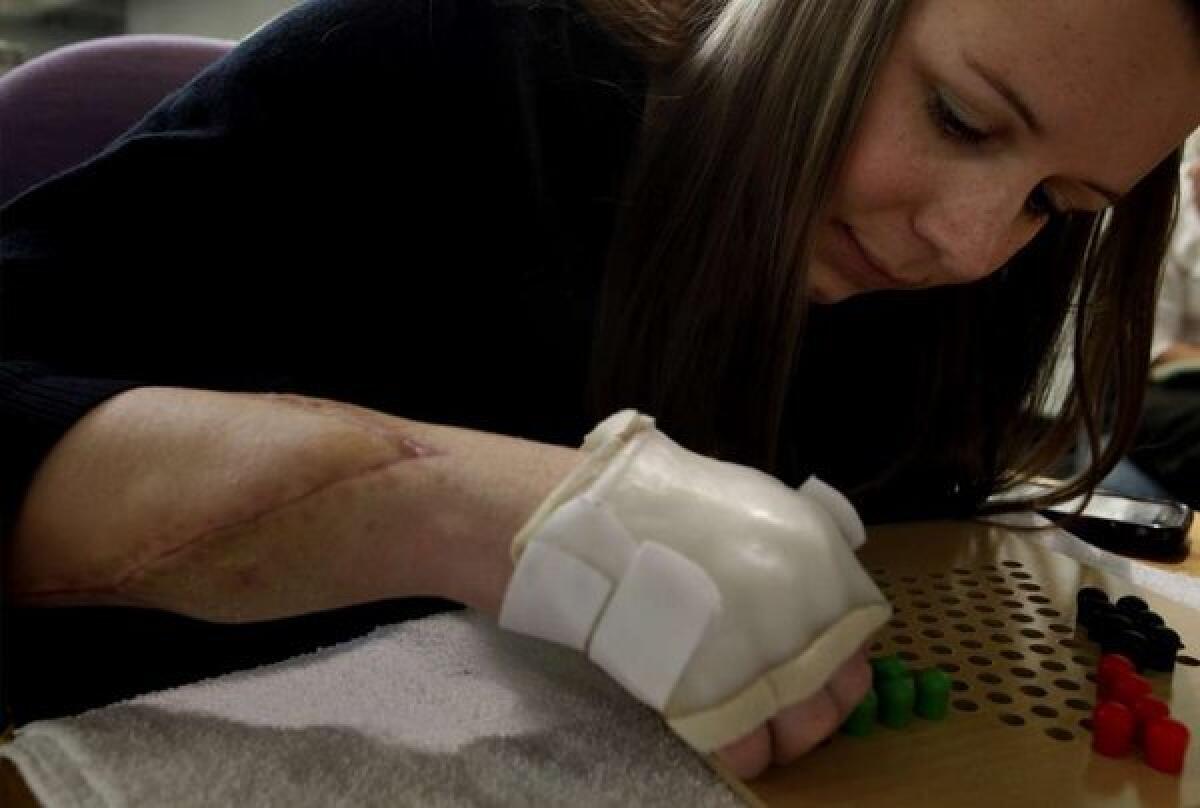Kids to get hand transplants at Boston Children’s Hospital

- Share via
Transplant surgeons at Boston Children’s Hospital are looking for kids who need a hand. The renowned Harvard University-affiliated hospital announced Monday that it was opening a pediatric hand transplant program, the first in the world.
Hand transplants in adults have become fairly common since the first one was attempted in Ecuador in 1964. The hand involved in that surgery was rejected after two weeks, in large part because doctors didn’t have a good understanding of immunosuppression drugs back then, according to this report in Minnesota Medicine.
It took until 1998 for a hand transplant to take, and more than 70 hands have been transplanted successfully since then, according to the Composite Tissue Allotransplantation program in Louisville, Ky., which performed the first such operation in the U.S. in 1999. Multiple academic medical centers – including the University of Pennsylvania, the Mayo Clinic and UCLA – now perform hand transplants.
That steady progress prompted doctors at Boston Children’s Hospital to consider making the surgery available to younger patients, said Dr. William Harmon, medical director of the new program.
“It has been shown in adults that hand transplants can be safe and effective; the time is right to bring this to a younger population,” Harmon said in a statement from the hospital.
Science and Health: Sign up for our email newsletter
All transplant surgeries are complicated procedures, but hand transplants are particularly complex. The operation involves skin, muscle, tendons, nerves, blood vessels, bone, cartilage and even fat. A hand transplant surgery can last twice as long as a heart transplant.
There’s reason to think that children may end up with better results than adults, Harmon said.
“We know from experience that kids can regenerate nerves better than adults and believe that their immature immune systems can learn to adapt to a transplant successfully,” he said.
As with any type of organ transplant, recipients must take immunosuppression drugs to make sure the donor hand is not rejected.
For its initial patients, the Boston Children’s Hospital Hand Transplant Program is looking for kids who are at least 10 years old and in “good overall health” but have been without their hands for at least one year. The ideal candidates would be missing both hands, but the hospital will also consider children with only one hand that functions poorly. Children with one good hand may become candidates if they are already taking immunosuppression drugs as a result of another transplant operation.
“We hope that for some children, hand transplants will improve their quality of life, allowing them the ability to be more independent and perform daily tasks — tasks that many of us take for granted,” Dr. Amir Taghinia, who will be the program’s surgical director, said in the statement. With two functioning hands, transplant recipients would be able to feed, dress and bathe themselves, he added in a video on the hospital website.
No child has ever received a hand transplant from an unrelated donor. The only known case of a hand transplant involving a child occurred in Malaysia in 2000. In that case, a 1-month-old girl who was born with a “severely deformed” left arm received a new arm from her identical twin sister, who died at birth, according to this hand transplant timeline from Composite Tissue Allotransplantation. Since the donor and recipient were identical twins, rejection was not an issue and no immunosuppression drugs were needed.
Families interested in learning more about the Boston Children’s Hospital program should visit bostonchildrens.org/handtransplant or call 1-877-TX4-PEDS (1-877-894-7337) and ask for the hand transplant coordinator.
Return to Science Now.







